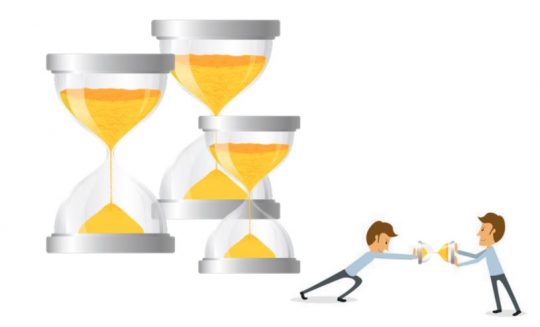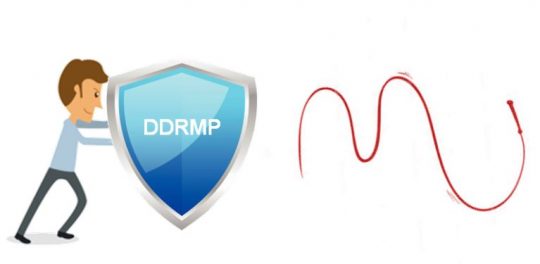Building a demand-driven supply chain is not a remedy to all supply chain issues, but it can greatly improve companies’ performance. Here is why :
1. Demand-Driven Develops Agility by Compressing Lead-times

Long lead times are no longer suited in a world full of demand volatility. Strategic inventory positioning has a direct effect on lead time compression. But shorter lead times are also coming from other features of Demand-Driven methods, such as the protection of critical operations, or the reduction of work in progress.
Positioning finished good buffers in the distribution network of a manufacturer of cosmetics packaging had a direct impact on the lead time seen by their customers: lead times went from 14 to 6 weeks! The supplier’s ability to adapt to demand changes from its customers was rewarded with an almost flawless service rate and a new market share from its main customer.
2. Demand-Driven Stops the Infamous Bullwhip Effect

The amplification of variability along the supply chain is a big source of supply disruption, and oftentimes a nightmare for planners. The strategic positioning of stock buffers, which is the first step in any Demand-Driven project, stops the transfer of demand and supply variability.
What we saw in one of our assignments is that implementing buffers for some raw materials had a direct impact on suppliers’ performance. The customer was surprised to discover that one of their less reliable suppliers jumped to the top in terms of delivery performance. Buffers were able to stabilize demand seen by this supplier, improve the relationship, and help them organize and deliver better.
3. Demand-Driven Triggers Replenishment From Accurate Demand Signals

The use of forecasts to trigger planned orders generates a lot of ‘noise’ upstream of the supply chain. With Demand-Driven methods, replenishment orders are triggered by actual demand, providing accurate signals for planning, and avoiding dedicating resources to products that will not sell immediately.
“I don’t want to impact my overall equipment efficiency and unit cost” is a classic objection one hears when implementing a demand-driven approach. This fear comes from some cost-oriented managers who do not fear the frequent changes in production lots that would (virtually) increase manufacturing costs.
A whole debate, to which we can say that positioning semi-finished product buffers have helped to protect critical resources in a production line.
Production changes are as frequent as before, but planners now focus on orders to replenish inventories being consumed in real-time by customers, instead of replenishing based on forecasted consumption.
This allowed manufacturing to adapt lot sizes to this real demand and avoid scrapping outdated products. So even if fixed costs were distributed differently on every other product batch, cash flow and profitability increased by being able to sell instead of stocking and scrapping!
4. Demand-Driven Uses Forecasts to Configure and Size the Supply Chain

While actual demand is used to trigger replenishment orders, forecasts are used to set the parameters of the demand-driven model. This allows configuring the supply chain periodically through the adjustment of buffer sizes, which are used directly in operational planning.
Perhaps the best example we can provide is of this is a pharmaceutical company that updated its planning parameters once a year (safety stock, lead time, lot sizes, planning horizon & buckets, etc.), best case scenario. For the planners, apparently, there were more urgent fires to fight with MRP error messages and expediting, for example.
Demand-driven planning and execution have pushed them towards a weekly, dynamic update of buffers and planning parameters, entering them in a continuous improvement loop that has drastically reduced expediting, firefighting, and stress.
5. Demand-Driven Provides Easy to Interpret Signals for Planning and Execution

Red, yellow, and green are a universal language when it comes to deciding when to act, pay attention, or keep cool. This is the language used for planning, scheduling, or expediting orders in a demand-driven supply chain so that the focus remains straightforward.
Maybe the best testimony is that of a scheduler from a large corporation who said, “before DDMRP, I used to spend an entire week each month trying to optimize a schedule based on data I didn’t believe in because they would change every week. So my perfect plan needed revision at least once a week with as much time spent. Now I only spend five minutes a day to launch and prioritize my orders, and I am extremely confident in my decisions!”
6. Demand-Driven Enables a Better Control of Inventory

Stock buffers make inventory target settlements easy and accurate. Besides, the method provides run charts to determine if current inventory is within preset ranges. As experience shows, inventory will converge toward the target range. You can then determine easily and confidently what your future inventory will be.
Within aXoma, we have seen for one of our customers that in less than eight weeks, the inventory in the distribution network became consistently centered around the target coverage value, even though we only positioned buffers in a single strategic point of this multilayer, complex network. Globally, days of inventory remained the same, but we saw that 90% of the SKU were in the target range of inventory. Historically, more than 70% of the SKU inventories were consistently in the “too much” or “not enough” zones.
To learn more about what we do, you may contact :
Hervé Bellande, Partner: herve.bellande@axoma-consultants.com
Pierre Abou Hamad, Senior Manager: pierre.abouhamad@axoma-consultants.com
Article posting website : https://blog.dys.com/powerful-demand-driven-supply-chain/
Les derniers articles par axoma Consultants (tout voir)
- Evolution du Rôle du Contrôleur de Gestion, du contrôle financier à la transition vers l’ère de l’IA et la BI - 15 mars 2024
- La Mission d’Assistance au Carve Out - 14 septembre 2023
- Le Cloud Maturity Model par Business at Work et aXoma Consultants - 27 avril 2023


